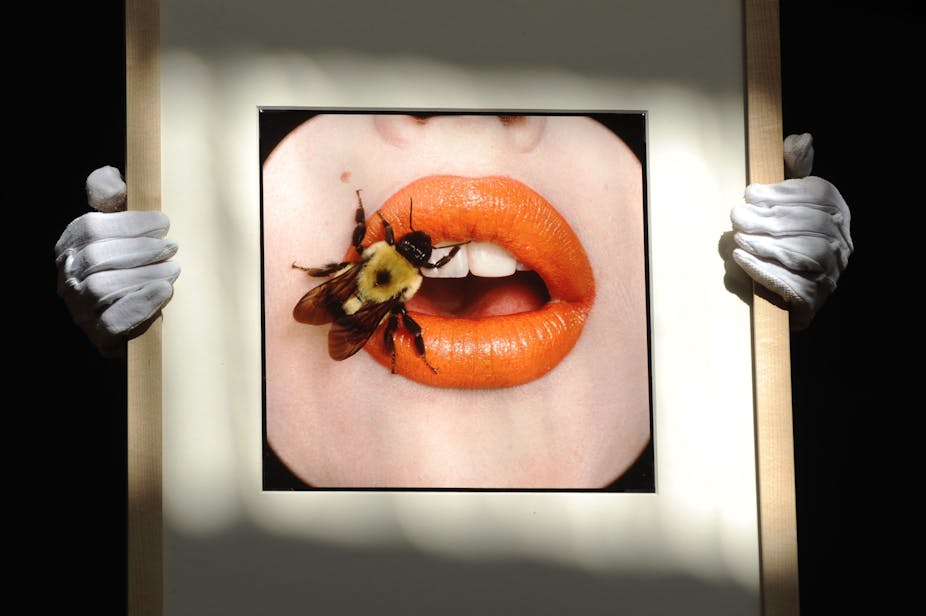Interested in art? Think it may be a good investment for your super? Think again - or at least be very very careful.
More than 10 months since Jeremy Cooper’s independent superannuation review recommended banning artworks and other collectables from self-managed superannuation funds, the future remains unclear for investors, artists and dealers.
In February, Financial Services Minister Bill Shorten revealed draft legislation that would allow the funds to invest in certain kinds of collectables. However the measures are yet to be debated in parliament.
Regardless of the legislative delays, one thing is clear: the Cooper Review’s recommendation that the acquisition of collectables and personal use assets by SMSF trustees be prohibited offers a reasonable prospect for much-needed reform.
Art investment is a far more complicated endeavour than some industry spruikers would have us believe, and more needs to be done to protect investors and artists alike.
Not a pretty picture
The interactions between the art industry and financial markets are historically fraught. Severe downturns in global share markets in 1973, 1981, 1987, 2000 and during the global financial crisis have consistently led to rushes to commodities, particularly gold, but also art.
When a bubble occurs in the art market there are a lot of speculative collectors looking for short-term gains.
Consequently, participants in the art market, particularly the global auction houses, end up buying and selling contemporary art at prices that are often below the prices that the same artists’ work is offered in dealer galleries.
The reputations, incomes and careers of artists and dealers are undermined in this situation.
An eye for detail
Most case studies show that successful major collectors are knowledgeable about art and the art market in which they are buying. They seek out reputable dealers and auction houses and work with them to build collections over long periods, often over their entire lifetimes.
Other research shows that over a 20 or 30 year period, art investment made by well-informed collectors can approximate gains made from other equities investments.
However, the lack of prudential regulation in the global art market makes it unsuitable for superannuation funds that entitle the holder to substantial taxation exemptions.
The Cooper Review identifies that SMSFs are often member-controlled, rather than having corporate registration, and that they are limited to four members. The rising number of member-controlled SMSF’s magnifies the risk of retirement saving loss, which has implications for the social security system and the Australian taxpayer.
Those individuals, trustees of SMSFs, are not necessarily well informed about art, the art market or its history. This means they can fall prey to dealers who set up businesses precisely to capitalise a spike in demand caused by loopholes in the superannuation and taxation industries.
The peer-group regulation practiced by the Australian Commercial Galleries Association (ACGA), and Arttrade, for Aboriginal art, offers one way to seek out a reputable dealers. A reputable dealer will not promote a “get rich quick” scheme.
A young market
In the context of discussion about the Cooper Review, the history of the Australian art market – in a global context – should be considered. Australians only became serious art collectors in the 1960s.
Initially, most collectors, even those who traveled widely, only collected Australian art. Investment by Australian banks and corporations also built the art market here.
In the 1990s, most of these corporate collectors divested their art collections. In the last 20 years, Australian artists, dealers working in multinational partnerships and the global auction houses have shifted their focus from Australia.
Aboriginal art is still internationally competitive but contemporary art values vary greatly.
In Australia, at any one time there are at least 400 people producing fakes of Aboriginal, historic and contemporary art.
In the case of Picasso, art values are determined by his signature or brand. However, most artists’ work varies in aesthetic and financial value. Private collectors collect different works to art museums – they collect more decorative pictures.
Private collectors are often surprised when a gift they propose to a state or national gallery is declined. Museums are the arbiters of aesthetic value, and hence financial value.
Inexperienced collectors lacking serious knowledge of art and museum collections can often be misled by an unscrupulous dealer or a belief in the supremacy of their own taste.
Public policy and education in the arts varies from state to state and has frequently been the target of budget cuts or a ‘back to basics’ movement that emphasises literacy and numeracy skills over creative content.
Research on audiences for public galleries in Australia, and public attitudes to the arts, show that there is very restricted understanding of the work and role of an artist in contemporary society.
Most new, or young collectors, tend to buy the work of their own generation, and buy in the local market where they feel comfortable and only pay modest prices for artwork.
In contrast, art for investment is sold by specialised dealers, or consigned to specialised sales across the world, in the market which guarantees maximum returns through buyer competition, tax exemptions or currency fluctuations.
The global art market is not a safe place for the average SMSF trustee or fund holder.

